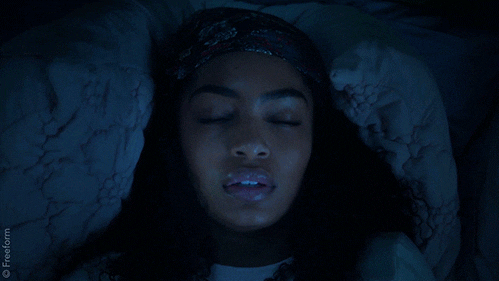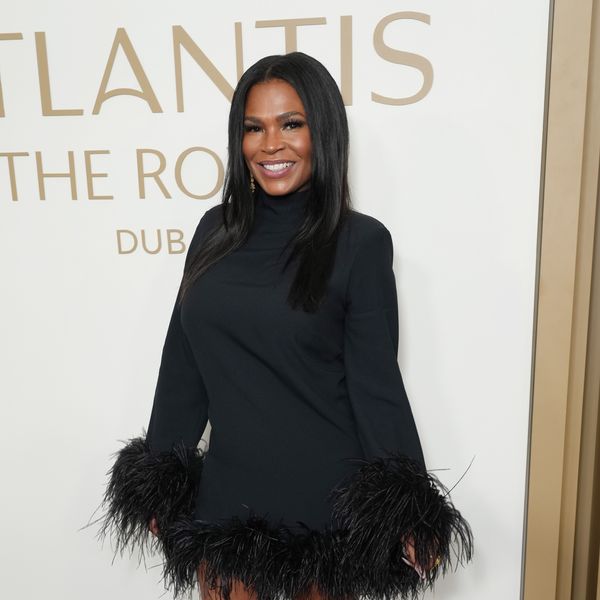
"Deprivation".
"Restrictions".
"Boring".
All of these words constantly ran through my mind when I first tried to get my finances in order and implement a budget. I had so many failed attempts because, for one, I was making my budgets super unrealistic and, two, I cringed at just the thought of having to even be on a budget. I just didn't get why I needed one. So quite naturally, I was unable to make it a consistent habit.
Fast forward a few years later, I started to grasp the concept of a budget much better. I'd attribute that to mindset shifts as well. I realized that a budget was simply just a spending plan and that I didn't have to strip all of the things I loved and enjoyed doing in order to be successful with budgeting.
You can still live your best life while on a budget.
I didn't have to give up brunch with my girls or have to compromise my style. Once I implemented budgeting into my life, I was actually able to do MORE of the things that I enjoyed simply because I was much more responsible with my coins and knew where everything was going. I also cut out things from my life/expenses that did not serve me any longer and that I didn't value.
That's why I can appreciate the 50/30/20 rule when it comes to budgeting. It's simple, realistic, and doesn't deprive you of those things that you love while taking care of business. Let me break it down for you.
The 50/30/20 rule is simply this:
- 50% of your income goes to your needs
- 30% of your income goes to your wants
- 20% of your income goes to your savings and other goals
See, simple right?
Here's how you set a solid foundation and get started with implementing this rule into your lifestyle.
Analyze spending habits
First, it's imperative that you analyze your spending habits prior to establishing this budgeting rule.
Most people spend more money than they think they are actually spending. Additionally, they don't really know where their money is going. You need to analyze your spending habits in order to get down to the nitty gritty. Taking time to really dig into your accounts will help you when deciding where you want to allocate your coins with the 50/30/20 rule. It's super hard to get your financial life in order if you don't know where your money is going.
Make sure you are taking a close look into the discretionary spending that you are doing. These expenses are those that vary from month to month, to include:
- Eating Out
- Clothing
- Groceries
- Going Out/Entertainment
- Transportation
Ask yourself, "Am I doing the most with my spending, or nah?" Keep it 100!
Determine your actual needs (50%) vs. your wants (30%)
Additionally, many people have trouble sticking to a budget because they find it hard to determine the difference between true needs and wants.
Needs are items that you must have for basic survival/daily living. For example, food, housing, clothing, transportation, insurance, etc are all needs.
Wants are items you desire, but can live without. For example, travel, entertainment, hobbies, eating out, memberships, etc are all wants.
To determine if an item is a need or a want, picture yourself living without it. What consequences would occur if you didn't have that item in your life? Would those consequences have a significant impact or would you just miss the item? Being honest about the difference between a need and a want is a critical step towards smart budgeting.
Using the rule of 50% towards needs and 30% towards wants, actually allocate your income accordingly.
Identify savings and other financial goals (20%)
Once you've gotten clarity on where you're spending your money and identified your needs and wants, you then need to figure out what you want to accomplish with the remaining 20% of your income.
Here's a few questions to get you going:
- How much do you want to contribute to retirement?
- How much do you want to contribute to your emergency fund?
- Do you have any debts you want to pay off? How much extra do you want to contribute to reach those goals?
- Do you have any other investment goals? How much do you want to invest?
This is the roadmap for the 50/30/20 rule. Here's a quick example:
MONTHLY TAKE HOME PAY: $3,200
NEEDS: $1600
Rent $1,000
Utilities $150
Transportation $100
Food $200
Insurance $150
WANTS: $960
Travel $400
Eating Out $150
Nails $50
Apple Music $10
Netflix $10
Gym $10
Hair $130
Sneakers $200
SAVINGS/GOALS: $640
Emergency Fund $90
401K $150
Debt Payoff $400
The most important step comes with the implementation and execution.
Once you determine how much and where, it's time to actually put it to use and see how it works for you. The fact that it's easy to use and to get started with regardless of your income is an advantage of using this method. Additionally, you'll be able to shape bomb money management habits without having to do too much while simultaneously saving for your future. I also love how it's super flexible and you can adjust everything to fit your lifestyle and income increases over time.
One con of this method is that it may not be realistic for those whose expenses are over 50% of their income. If that's the case, you can determine if there's anything you can cut out or bring in additional cash if needed.
This framework should allow you to get a better grasp on your money management and grow your savings in the process. Just like with everything else, you have to find what works best for you and stick with it in order to see results.
Do you subscribe to the 50/30/20 rule when you budget? What are some of your tips for effective budgeting?
Featured image by StellrWeb on Unsplash
- 8 Things You're Definitely Spending WAY Too Money On Every Month - xoNecole: Women's Interest, Love, Wellness, Beauty ›
- 7 Smart Spending Tips That Will Help You Save This Summer - xoNecole: Lifestyle, Culture, Love, & Wellness ›
- Why I Hate the 50/20/30 Budget | Club Thrifty ›
- Is the 50/20/30 Rule the Best Way to Budget Your Money? ›
- What is the 50/20/30 budget rule? | Investopedia ›
- The Ultimate Guide to the 50/30/20 Budget (Updated 2018) - Chime ... ›
- Budgeting your money using the "50/20/30" rule ›
- 10 Good Financial Rules of Thumb ›
- Free Budget Calculator - NerdWallet ›
- The 50/20/30 Rule for Minimalist Budgeting | MintLife Blog ›
- New To Budgeting? Why You Should Try The 50-20-30 Rule ›
- The 50/30/20 Budgeting Rule—How It Works ›
Kristin Sutton (aka the Money Therapist) is a personal finance and lifestyle blogger/coach over at DebtFreeBlackGirl.com that empowers young women to take control of their finances by changing the way they think about money. As a licensed therapist, her daily mission is to uncover and eliminate the mental roadblocks that hinder people from living the life of their dreams. You can find her on all things social: @DebtFreeBlkGrl
There’s just something about HBCU Homecoming that just hits different. Whether it’s your first time stepping onto the yard since graduation or you’re a regular at every Homecoming tailgate, HBCU pride is undeniable. It’s a vibrant celebration that unites the legacy of excellence and tradition with the energy and resilience of Black culture.
The experience goes beyond a typical college reunion; HBCU Homecoming is a family reunion, a fashion show, a cultural festival, and a week-long turn-up that embodies what it means to be unapologetically Black and educated. For HBCU alumni, the journey back to the yard each year is rooted in a love and pride that’s hard to put into words but impossible to deny.
From statement pieces to tech must-haves, every item represents the intersection of Black pride and HBCU love, ensuring that you show up to the yard in style and with intention. So whether you’re repping your alma mater for the first time since graduation or looking for fresh pieces to express your HBCU pride, these essentials will have you standing out, because, at HBCU Homecoming, it’s not just about showing up—it’s about showing out.
Thread Goals
diarrablu Jant Pants in Alia Noir

High-waisted, wide-legged, and ready to shut down the yard, the Jant Pants by diarrablu bring a whole new meaning to campus chic. Handcrafted in Dakar, Senegal, these free-flowing jacquard pants are perfect for stepping onto the yard with style and ease—making them a must-have for any HBCU alum’s closet.
Silver & Riley Convertible Executive Leather Bag Classic Size in Olive

This all-in-one luxury bag isn’t a bestseller for nothing. The Silver & Riley essential is made of Italian calfskin leather and thoughtfully designed, as it can be worn in four different ways: a shoulder bag, crossbody, a top handle, and a backpack. Chic and elegant, the Convertible Executive Leather bag is “the bag that every woman needs in her collection.”
Renowned Women's Intuition Cotton Graphic T-Shirt

Renowned
Renowned’s Women’s Intuition Cotton Graphic T-shirt features a bold graphic print inspired by the power and essence of women’s intuition. With its striking design, this all-cotton tee is a vibrant thing, making it a statement piece that celebrates feminine energy.
Mifland Million M Mesh Crop Shirt

Talk about bold, the Million M Mesh Crop Shirt combines edgy style with comfort, featuring Mifland’s signature print on a semi-see-through mesh fabric. Show up and show out in sophisticated flair.
HBCU Love FUBU
Melanin Is Life Melanated & Educated - I Love My HBCU Hoodie

Show off your HBCU love with this piece that represents everything you gained from your alma mater: a top-tier education, a community that lifts you up, and a deep sense of esteem for yourself and your culture. Wear it loud and proud, because being melanated and educated isn’t just a flex—it’s a legacy.
HBCU Culture Spelmanite Sweatshirt in Navy

Spelmanites, rep your Spelman pride with this unisex crewneck sweatshirt, designed for ultimate comfort and a relaxed fit. Made from a cozy cotton/polyester blend, this classic sweatshirt is as durable as it is stylish—making it an ideal piece for any Spelmanite showing love for their alma mater.
HBCU Culture Howard Is The Culture T-Shirt

Rock the ultimate flex by showcasing your Howard U love with HBCU Culture’s Howard Is The Culture t-shirt. This unisex tee offers a comfortable, relaxed fit that’s perfect for celebrating your HBCU spirit without sacrificing style or comfort.
DungeonForward FAMU - Strike Bucket - Reversible

DungeonForward’s Strike Bucket Hat brings versatility and style to the FAMU Crown collection with its reversible design, giving you two looks in one. Featuring a sleek black snakeskin-embossed brim lining and a bold outline Rattler emblem, this hat is all about repping your Rattler pride in style.
DungeonForward Savannah State University - HBCU Hat - TheYard

The Savannah State University HBCU Hat by DungeonForward is more than just a hat—it’s a symbol of Tiger pride and a nod to the culture. Perfect for gamedays, tailgates, or just showing off your HBCU love, this hat lets you carry a piece of the yard wherever you go.
Tech the Halls
Anker iPhone 16 Portable Charger, Nano Power Bank

Stay charged up with the Anker Nano Power Bank, which features dual USB-C ports, a foldable connector, and a compact design, making it perfect for those HBCU tailgates and late-night parties you pull up to.
Drip Check
Wisdom Frame 14 Square Sunglasses

Elevate your look with these angular square-frame sunglasses by Wisdom, bringing an ultramodern edge to any outfit. The sleek design makes them perfect for blocking out the haters while you stunt on the yard.
Coco and Breezy Eyewear Fortune in Gray Turquoise

The Fortune Glasses in Grey Turquoise is a bold statement piece to any Homecoming weekend ‘fit that “embody our fearless and outspoken DNA.” With their color and edgy design, these frames by Coco and Breezy are perfect for anyone looking to stand out and express their unapologetic confidence.
Howard U Lapel Pin

Rep your Bison pride wherever you go with this Howard U Lapel Pin from Pretty AmbVision. Whether adding it to your jacket, shirt, or bag, this pin is the perfect way to showcase your love for your alma mater while rocking your HBCU love with honor and distinction.
Mifland Standard Rucksack Mini

The Standard Rucksack is designed to evolve like that HBCU pride—getting richer, bolder, and better with time. Durable, stylish, and built to last, this Rucksack by Mifland is a timeless piece equipped with versatile carrying options and fully adjustable back straps for ultimate comfort.
Stay Fresh, Stay Blessed
Slip Pure Silk Sleep Mask in Pink

Keeping it cute starts with beauty sleep. This luxurious silk mask is an essential for a reason. If protecting your skin and waking up refreshed is your priority, look no further than this Homecoming essential.
Liquid I.V.® Hydration Multiplier Lemon Lime - Hydration Powder Packets

Stay hydrated and energized throughout Homecoming weekend with this Liquid I.V.® Hydration Multiplier in Lemon Lime. Just add a packet to your water bottle, and bless your body with 2-3 times more hydration than water with every packet. Because staying hydrated is the key to popping up and showing out all weekend long!
Loop Experience Plus Earplugs High Fidelity Hearing Protection

Designed for your hearing protection, these sleek earplugs reduce noise without compromising sound quality—perfect for enjoying the band’s halftime show, late-night parties, and DJ sets. Whether you’re front row at the step show or hitting the yard, your ears deserve to be protected in style!
Black Girl Magic Glass Cup

Sip in style and celebrate your melanin with the Black Girl Magic Glass Cup. Perfect for morning coffee, your favorite iced drink, or showing off your HBCU pride on the yard—this cup is all about keeping it cute while radiating your endless supply of Black Girl Magic.
Glow Up & Show Out
Black Girl Sunscreen SPF 30

What Homecoming weekend can be complete without an assist from this beauty find? Formulated to blend seamlessly into melanin-rich skin (no white-cast), protect your glow while you turn up with the Black Girl Sunscreen SPF 30.
Sienna Naturals Issa Rae's Wash Day Ritual Set

Issa Rae’s Wash Day Ritual Set from Sienna Naturals includes the H.A.PI. Shampoo, the Plant Power Repair Mask, Dew Magic, and Lock and Seal to get your crown right. Whether you’re repping your coils or rocking a new color on the yard, these products restore and nourish your strands, keeping your hair healthy, strong, and Homecoming-ready!
54 Thrones Ivorian Cocoa + Ghanaian Coconut Beauty Butter

Stay glowing from the tailgate to the after-party with the 54 Thrones Ivorian Cocoa + Ghanaian Coconut Beauty Butter. Infused with African-sourced ingredients, this rich, multi-purpose butter is the answer to keeping your skin soft and radiant through all the festivities all Homecoming long.
Saie Glossybounce Hydrating Lip Oil

Keep your lips looking luscious and nourished with the Saie Glossybounce Hydrating Lip Oil. Perfect for adding an extra pop to your pout before hitting the yard or freshening up between events, this lip oil is a beauty essential for staying camera-ready all weekend.
Join us in celebrating HBCU excellence! Check out our Best In Class hub for inspiring stories, empowering resources, and everything you need to embrace the HBCU experience.
Featured image by Visual Vic/Getty Images
Ananda Lewis Clarifies Why She Didn't Get A Mastectomy & Says She's Doing 'Better' After Stage IV Breast Cancer Diagnosis
Former MTV VJ Ananda Lewis received a lot of backlash from online critics after sharing she decided to forgo a double mastectomy. But there's more to the story.
Ananda was diagnosed with stage III breast cancer in 2019, and during a recent round table discussion with CNN's Stephanie Elam and Sara Sidner, she revealed that she decided not to get a double mastectomy and, now, she has stage IV cancer.
Following that interview, she clarified why she did not get the surgery. “The circumstances were not conducive to surgery because my tumor wasn’t aggressively growing at the time, and then COVID hit,” Ananda told The Epoch Times.
She opted for a cryoablation treatment instead, which uses extreme cold to destroy the cancer cells.
Another thing the 51-year-old wanted to clarify was whether she was dying. She said she is not. “Nothing happened. Today, I am fantastic. I may have felt like I was dying in February, but I’m not dying, and I’m definitely doing better than I was last October,” she said.
She is focused on taking care of herself and getting a "good 20 more years out of this body." She follows a keto diet and avoids alcohol, white flour and white sugar.
During the CNN roundtable discussion, the mother of one shared that she had an integrative approach to her treatment, which included traditional medicine and homeopathy methods such as red light therapy.
“My plan at first was to get out excessive toxins in my body. I felt like my body is intelligent, I know that to be true. Our bodies are brilliantly made,” she said.
“I decided to keep my tumor and try to work it out of my body a different way,” she continued. “Looking back on that, I go, ‘You know what? Maybe I should have.’
Ananda also admitted that she wasn't prioritizing early detection, such as getting mammograms. The former talk show host's mom also had breast cancer and chose to go the conventional route, which influenced her to go a non-traditional route.
As a content creator, Ananda uses her social media to inform others on the things she's learned about obtaining good health such as toxic items to through out of your pantry and the many benefits of water.
Let’s make things inbox official! Sign up for the xoNecole newsletter for love, wellness, career, and exclusive content delivered straight to your inbox.
Feature image by Paul Archuleta/Getty Images















